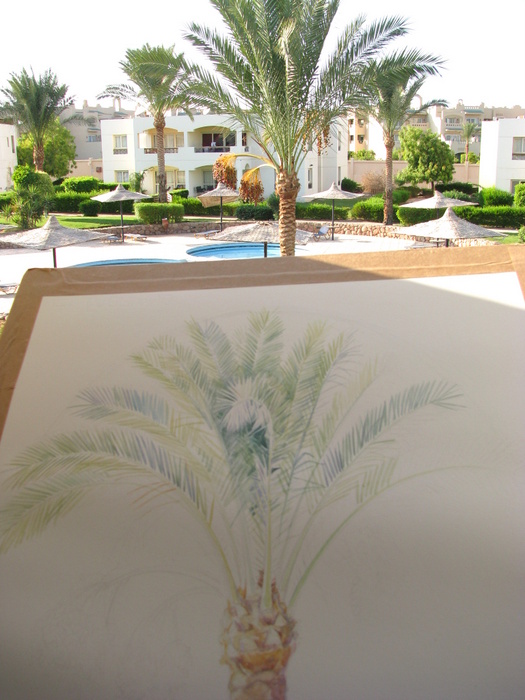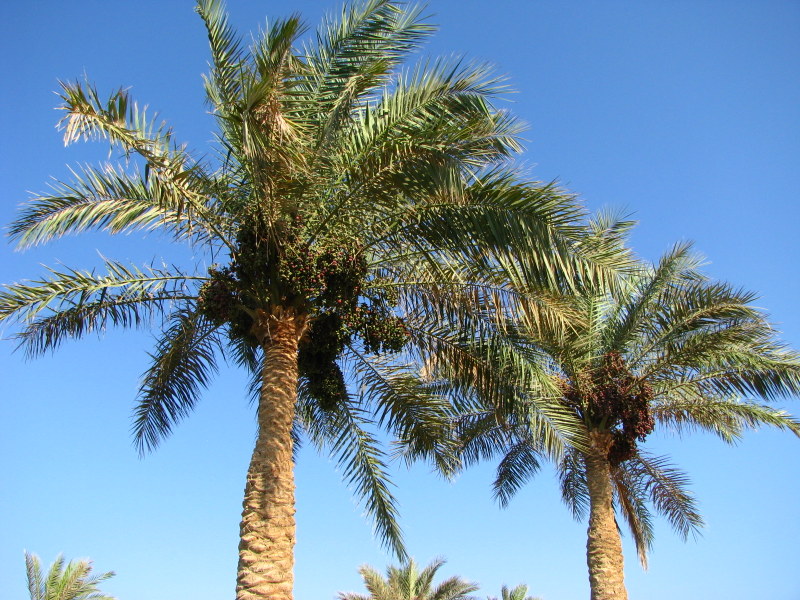“Every seed is a longing” Khalil Gibran
 |
| Hayani dates |
When excavating the Temple of Herod the Great in 1965, a dusty
jar of date seeds was discovered. At the time of Herod, the kingdom of Judea was
renowned for it’s forest of date trees, which had a distinctive sweet taste. Such was their importance to the economy, the palm tree was depicted on the coins of that time. However by 500AD, all the date trees had been cut down and the
Judean palm tree was no more. This cache of ancient seeds was stored for a further 40
years, until 2005, when an inquisitive botanical researcher decided to try to grow one. Three seeds were treated
with a special solution of fertiliser and hormones. To everyone’s amazement, one little seed began to sprout, 2000 years after it fell off the tree, making it the oldest viable seed in the world. This tree, still grows today and is the last of the famous Judean date trees. Palm trees are dioecious (meaning it has
separate male and female plants), and this tree is a male. So to continue the
line, it is hoped to crossbreed it with it’s nearest living relative, the
Hayani date palm from Egypt.
It’s been really interesting to do
all this research about date palms. Beside the fact that the dates themselves are
such wonderful subjects to paint, there is also a wealth of fascinating history
to accompany the date palm. My main
objective this summer though has been to identify the main characteristics of the
palm tree, and to figure out just how to portray all those features in six
paintings for the RHS.
One of my paintings will be the story of the seed.
 |
| Phoenix dactylifera seedling studies |
Walking through the gardens here, I
was struck by how many tiny seedlings were growing beneath each tree. I dug a
few up and took them home to paint. The first few that I painted are still
quite small, 6-10 months old.
 |
| Study of older seedling showing the juvenile leaves which are non pinnate and entire |
I also found a larger seedling, probably about
18-24 months old but still showing the juvenile leaves which are quite
different to the adult ones. As this is quite large, I decided that I would
carefully draw this out on tracing paper for now, backing it up with a few
colour studies and numerous photographs.
 |
| A larger study on tracing paper which will be used later |
But there was still one element
missing from this story, and that was the seed itself. A friend mentioned to me
that she once had a date seed that had accidentally sprouted in her compost in Ireland. Inspired by her story, I decided to see if I could grow my own. If a 2000
year old seed can grow, then surely I could coax at least one to sprout?
Little date seeds grow into beautiful trees, so I also need to paint a tree.
 |
| Palm tree with fruit, plein air study 2103 |
Last year I spent a couple of enjoyable afternoons by the
pool painting a palm tree, which was laden with fruit. It was great in that it
gave me a good idea of what colours to use, but it was hard to fit it all onto
the page and I felt that the bountiful fruit set the composition off balance. I wanted to do a study of the whole tree. I’ve been putting it off
because this summer has been really hot, making painting outside quite a
challenge. Fortunately there is a beautiful tree just outside my window, so I
took the easier air conditioned option.
 |
| It's hot out there! |
I haven’t managed to finish it yet
because it’s quite a big study (70cm high), and painting all those leaves takes a lot of concentration! But there's something quite soothingly hypnotic in building up the patterns
within the crown of the tree and painting all those negative spaces.
Whilst I have been doing all these preparatory studies, the
dates have been ripening slowly on the trees. To my delight, one of the
gardeners offered to climb up and pick some of the riper ones which hang just
out of my reach. My fridge is now full of sweet crunchy dates, some to eat and
of course, plenty to paint.
 |
| Gathering dates for me! |
However the best news of the week has to be this! After two
weeks of careful incubation, I have my first sprout! I have so much to paint before I leave.
“The plant reveals what is in the seed.” Ancient Egyptian
proverb






























